The Pastorela performance had its origin in medieval Europe, having been introduced by the Roman Catholic church as a teaching and conversion device. It portrays a very simple Christian message—”Beware of the devil, who is constantly tempting you to sin.” In this play there is at least one Hermitaño figure, a religious hermit. In the European tradition of Christian mysticism, some ascetics withdrew from society to better focus on their desire to commune with God. A very famous European mystic was Saint Francis of Assisi. The Hermitaño figure appears to have been modeled on such mystics. However, the hermit of the Shepherd’s Play is also a comic figure, alternately joking and serious.
Another character from the European Pastorela tradition was Bato, the foolish shepherd. In this drama, Bato seemed to personify ordinary humans who are susceptible to temptation, prone to sin, and therefore perceived by the Church as at risk for eternal damnation. In North American and Mexican versions of the Pastorela, this character is called “Bartolo.” In the drama, the devils are constantly tempting Bartolo, he appears to be gullible, and the Hermitaño is constantly advising Bartolo to resist the devils’ wiles. Angels and archangels also participate as necessary, to limit the devils’ power. As I noted in earlier posts, these characters have been expanded, so that one finds entire corps of Hermitaños, squadrons of shepherds, shepherdesses, or “ranchers,” and choirs of Angelitos.
Today I will include two more Hermitaño masks and then three that were worn by the Bartolo character.
Here is the first Hermitaño. I got this mask from John Kania and Joe Ferrin, of Santa Fe, in 1998. It is from Panindícuaro, Michoacán, the principal city of a municipio of the same name, which is about 50 miles west of Morelia.
This is a finely crafted mask, with almost all features carved in relief. It appears to be the work of a santero (a carver of saints), and must be fairly old, perhaps from the middle of the 20th century or earlier. The wood has split and cracked.
The carving of the features is so delicate. As usual with masks of hermitaños, this one has a smiling face.
The hair and pigtail are of sisal. This mask is 12 inches tall, 8 inches wide, and 4 inches in depth.
The back of this mask is heavily worn. There are pinholes in the wood, suggesting that this mask was carved from wood that was at one time infested with boring insects.
I purchased the second Hermitaño from Robin and Barbara Cleaver in 1991. It was said to have been collected in Guanajuato. Like the first, this mask is made from wood and sisal, but the difference in the quality of the carving is dramatic. Nevertheless it seems an effective mask, doesn’t it?
This hermit has a wrinkled face.
The ears are very simply carved.
All of the hair is made from sisal.
This mask is 10½ inches tall, 6½ inches wide, and 3 inches in depth.
There is heavy staining from use and foam pads on the forehead and chin were designed to make the mask more comfortable.
The first of the Bartolo masks was purchased from John Isaac, of Albuquerque, in 2002. It had been purchased from a private collection in Mexico, and it had been danced in La Pastorela, in Michoacán.
This Bartolo has a droll face.
Note the exaggerated extended upper lip.
This mask is 8 inches tall, 6 inches wide, and 3 inches in depth.
The back has moderate staining from use.
The second Bartolo mask, from Michoacán, was obtained from Jaled Muyaes and Estela Ogazón in 1997. It has the appearance of Moor masks made in the state of Veracruz. There are several notable features. A painted number on the back, 795, informs us that this was already in their collection in the 1970s, and that they had included it in their mask exhibit in May, 1981 at the Museo Universitario de Ciences y Arte in Mexico City.
The hair, mustache, and goatee are most elaborately carved.
This mask has a glazed surface on the face and on the back. This is how a mask looks after it has been soaked in Kerosene in order to eradicate an active infestation with boring insects. Jaled Muyaes used this technique to treat severe, potentially damaging infestations.
The eyes have inlaid marbles. The vision slits are tucked under the painted eyes.
This mask is 9 inches tall, 7 inches wide, and 3 inches in depth.
The glazed appearance of the back reflects treatment with kerosene. The right edge of the back has been resurfaced, probably to remove an area of damage.
The third Bartolo mask, obtained from Robin and Barbara Cleaver in 1988, had been collected in El Tlacuache, in the Municipio of Pénjamo, Guanajuato. Tlacuache is a Mestizo town.
In this Pastorela video from nearby Pénjamo, devils menace Bartolo figures wearing white masks with spotted cheeks that resemble this one.
https://www.youtube.com/watch?v=3l_d_BOpuxE
This is yet another mask with pinholes that resulted from insect infestation.
This Bartolo has very simple painted features.
This mask is 10 inches tall, 6¼ inches wide, and 3 inches in depth.
The back shows significant staining from use.
This ends my discussion of Pastorela masks. Next week I will introduce masks from other dance dramas in the Mexican state of Michoacán.

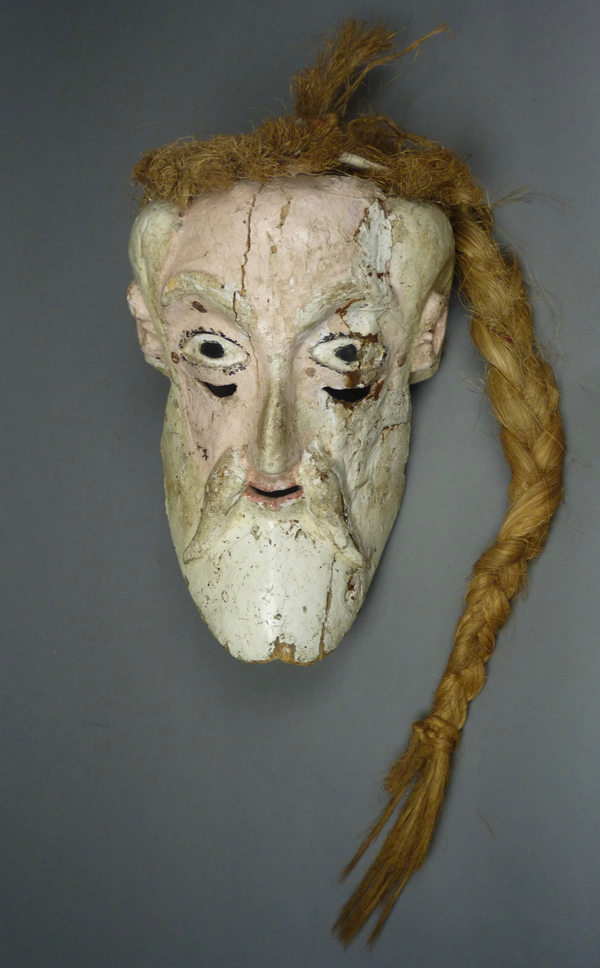
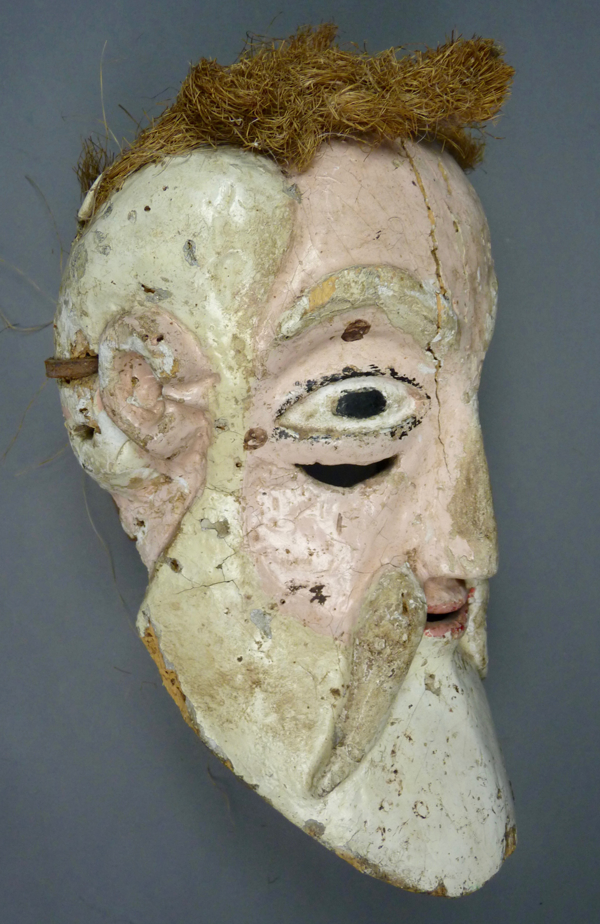
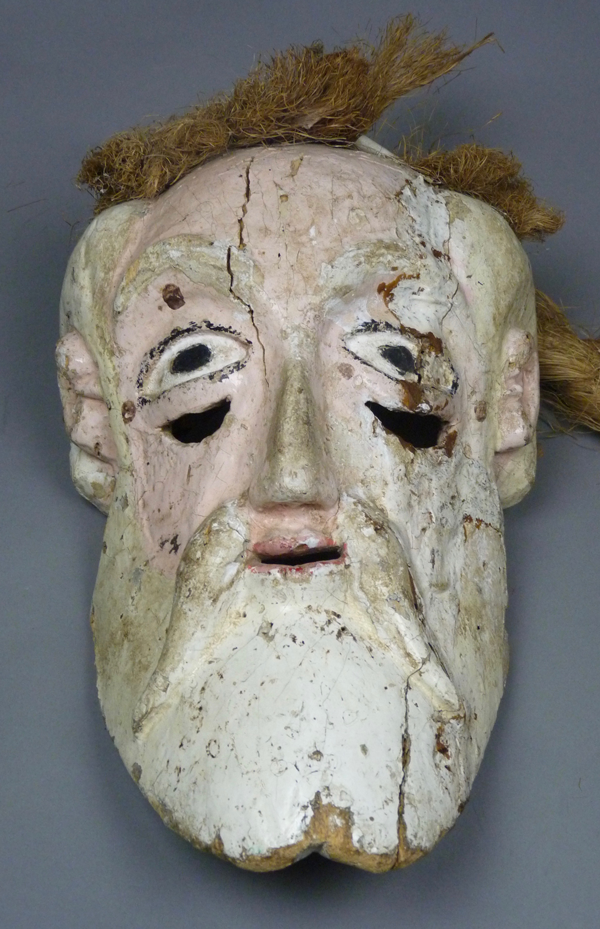
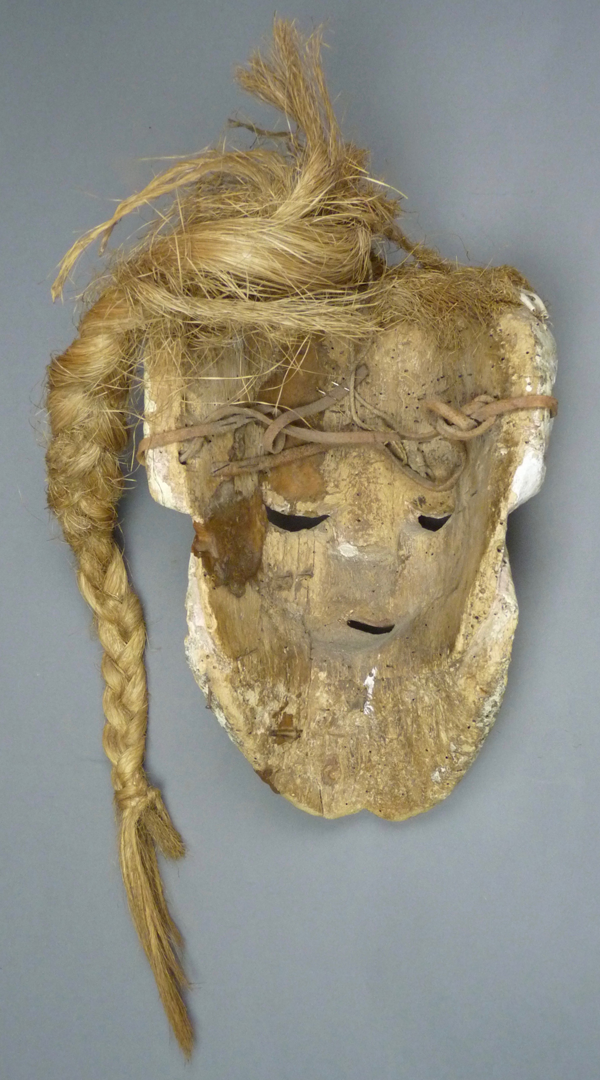
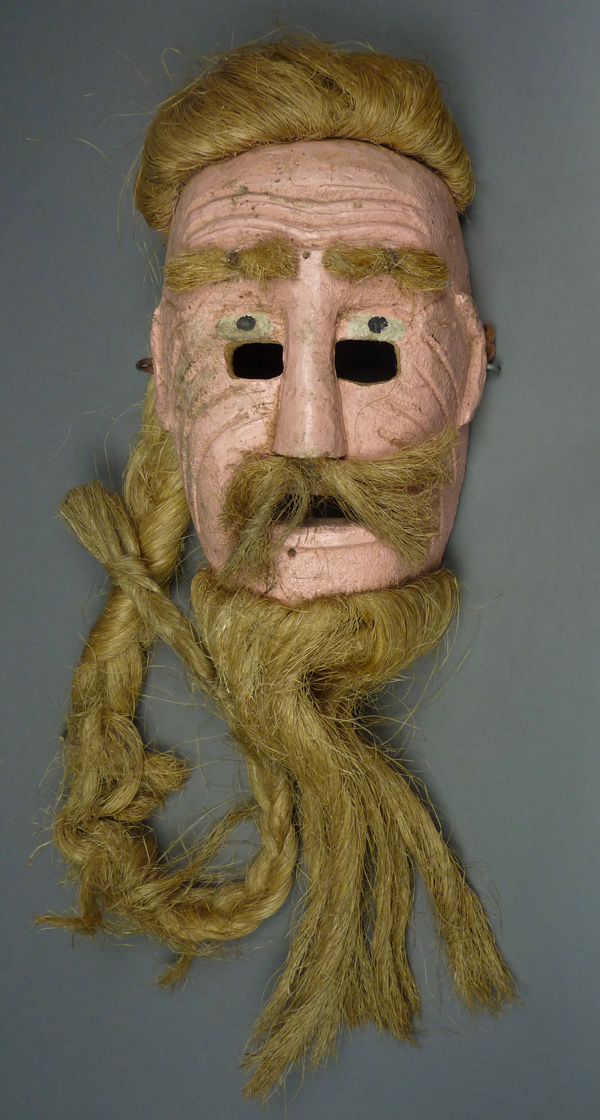
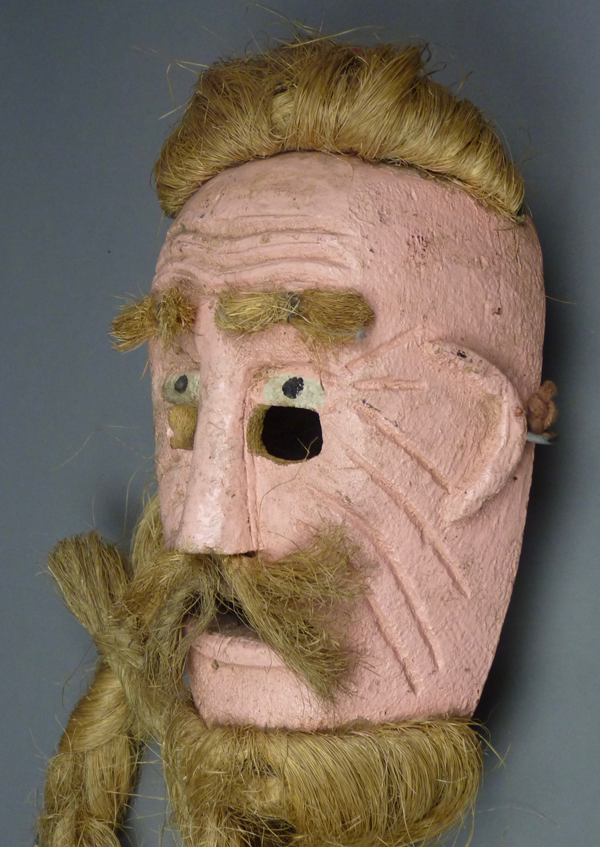
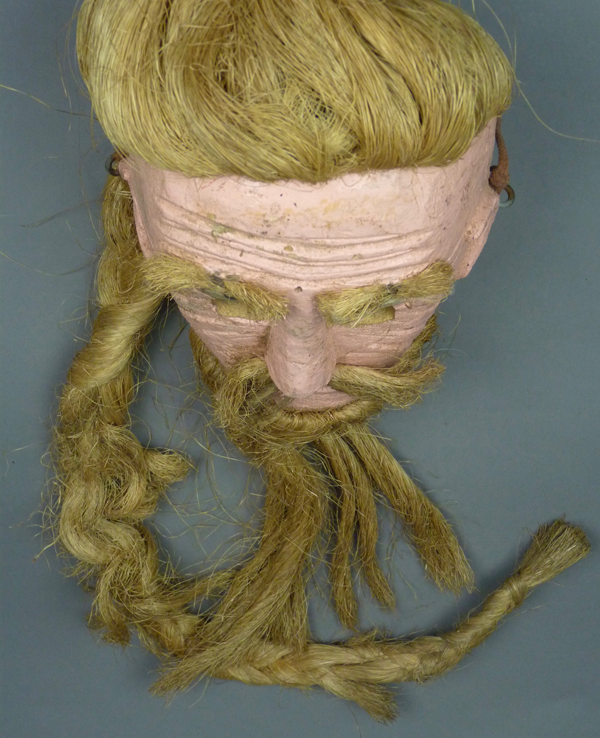
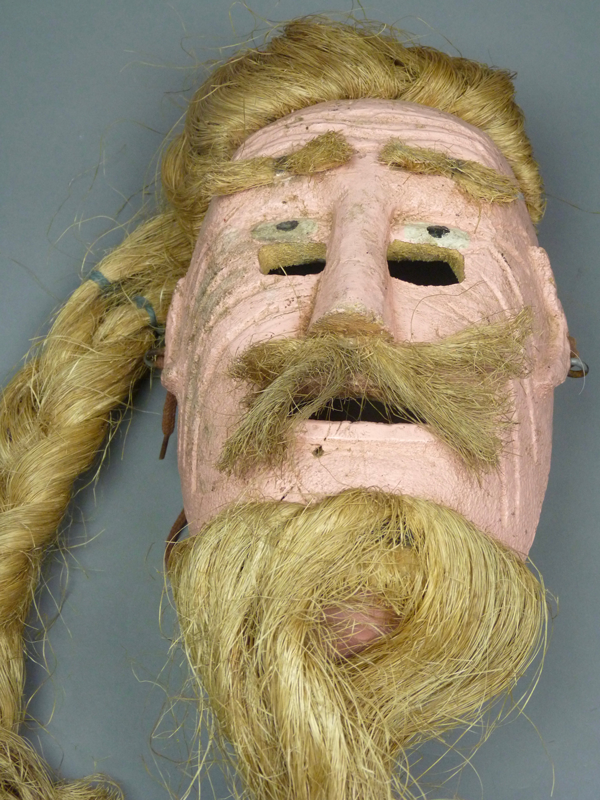
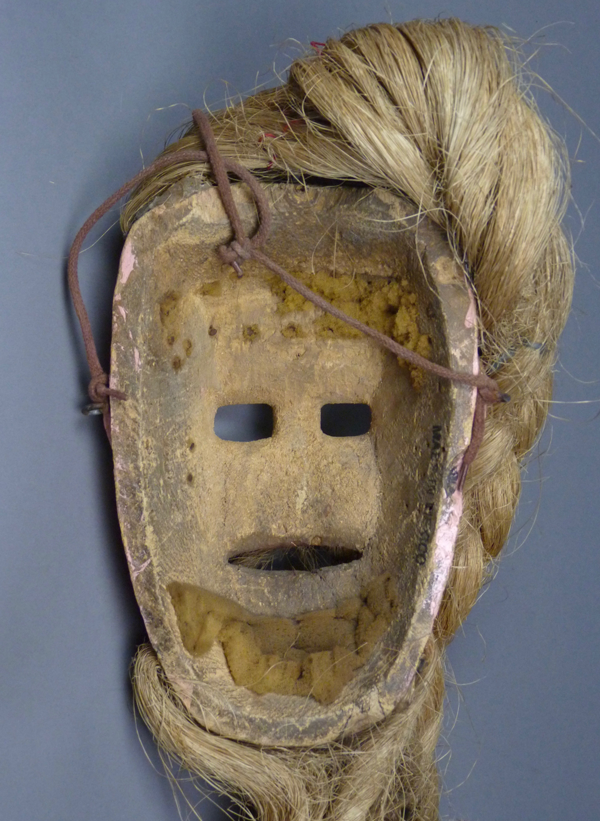
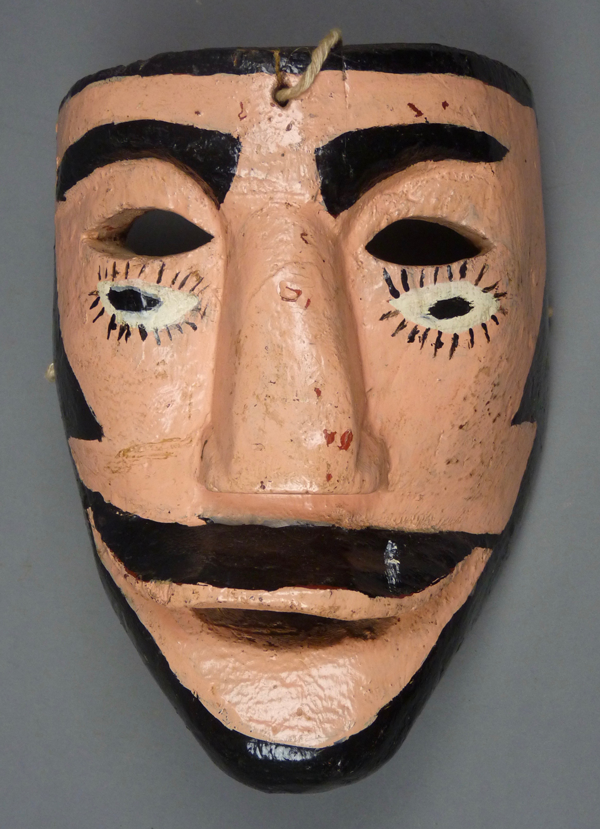
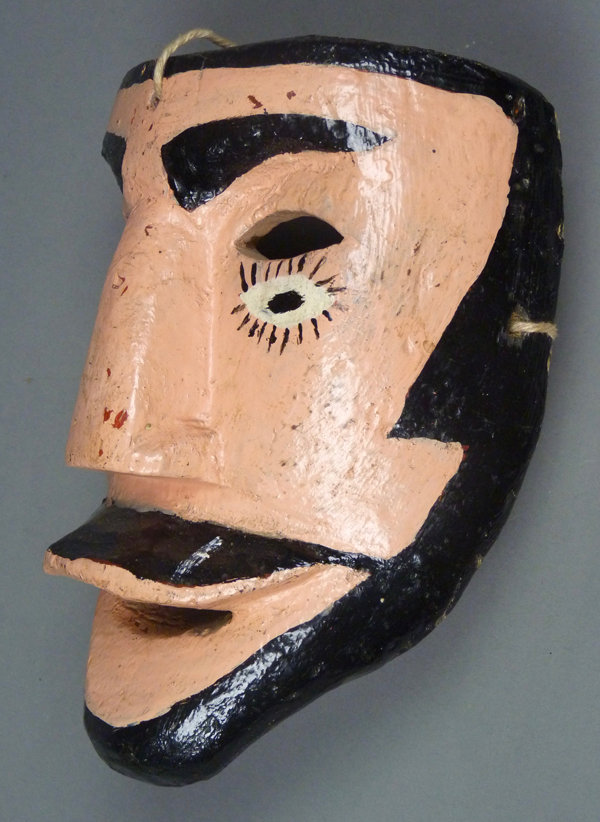
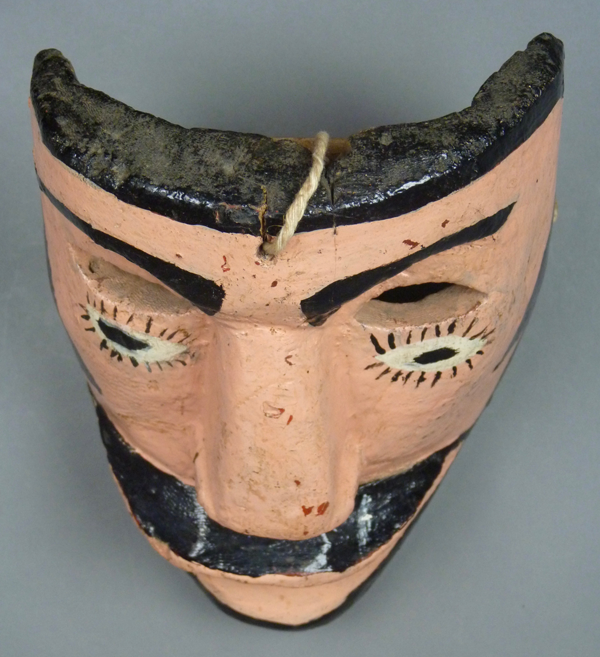
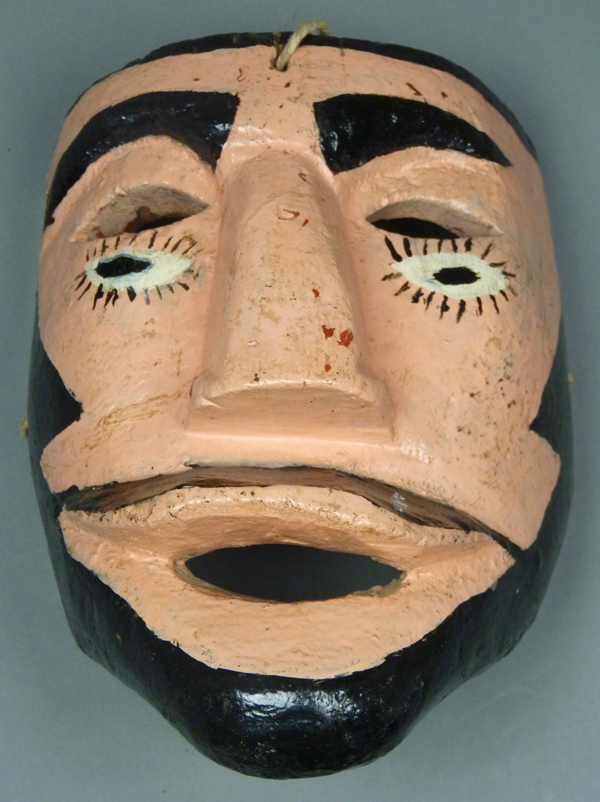
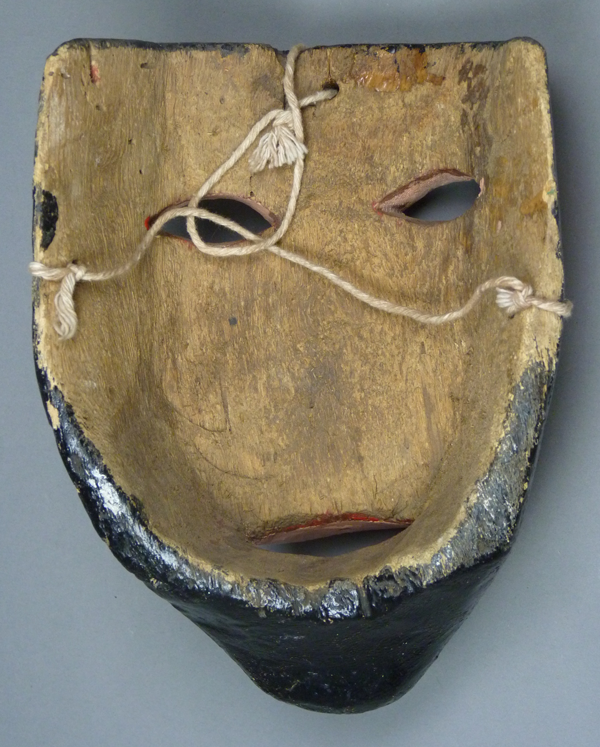
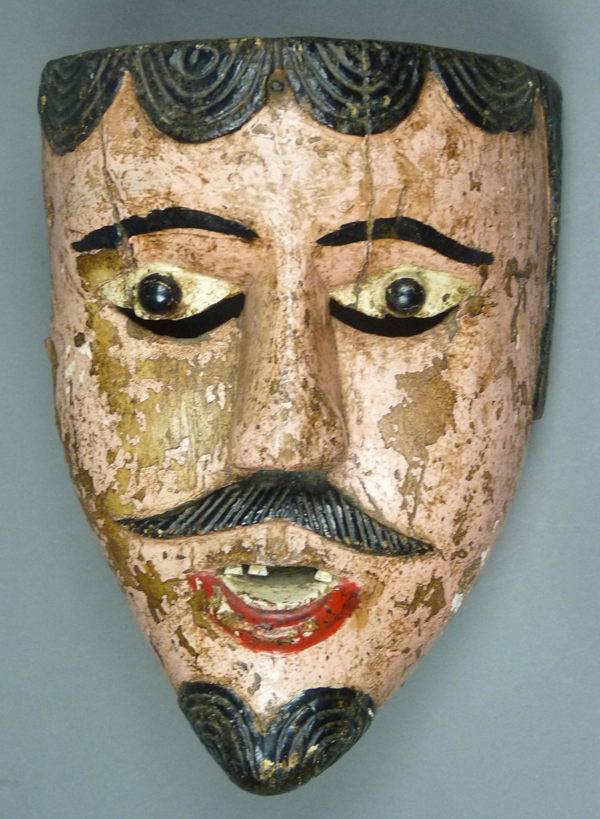
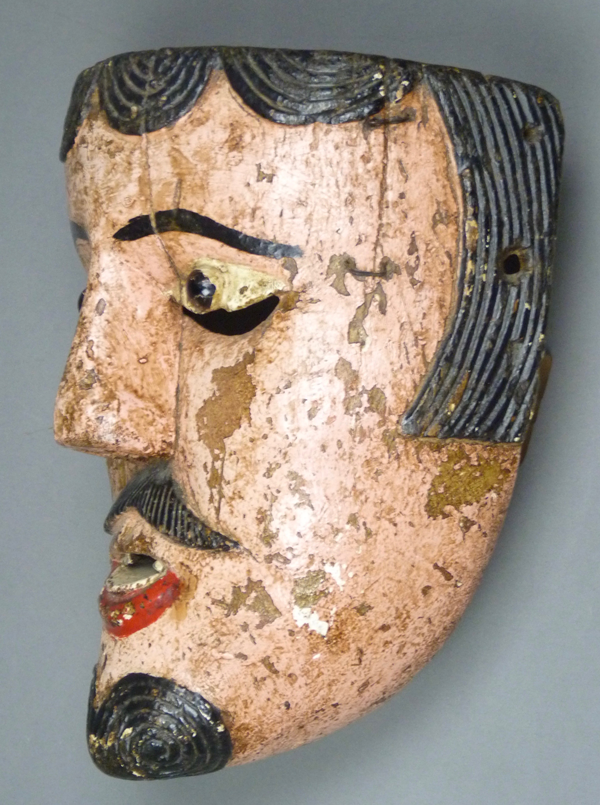
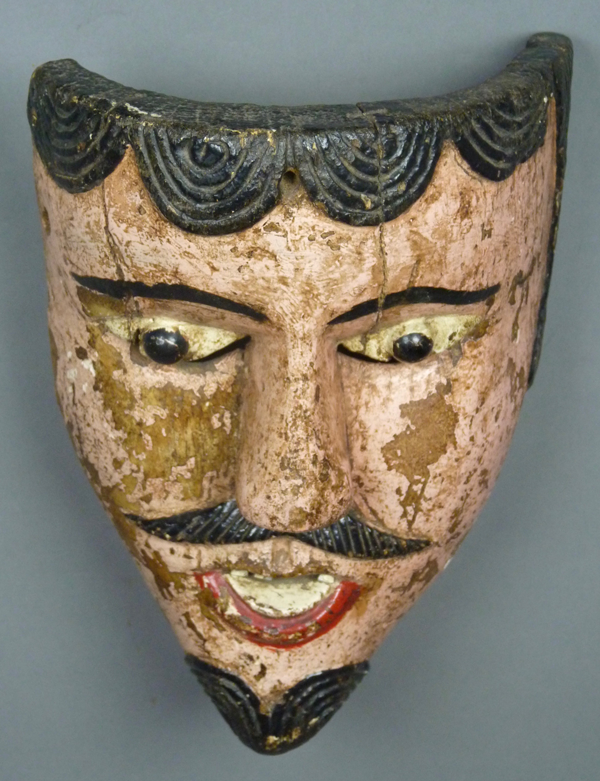


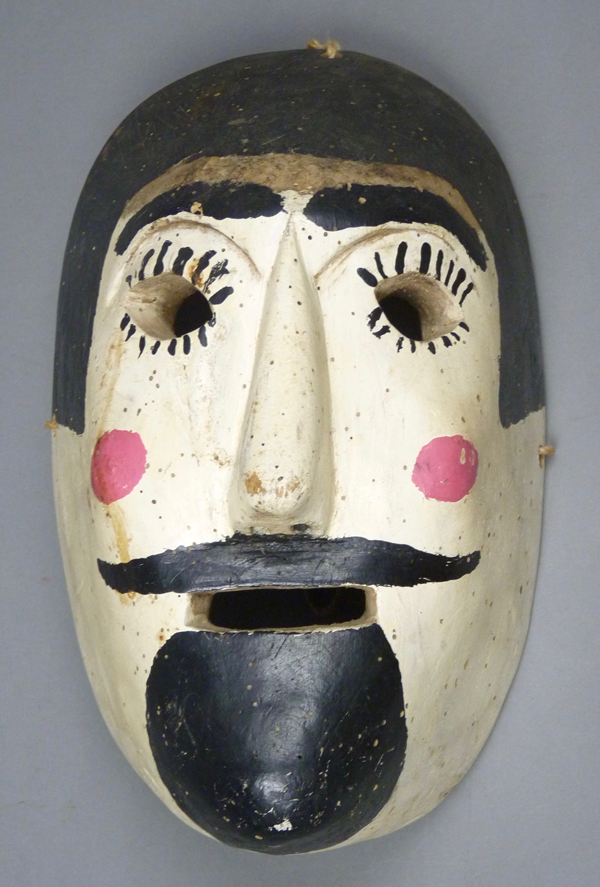
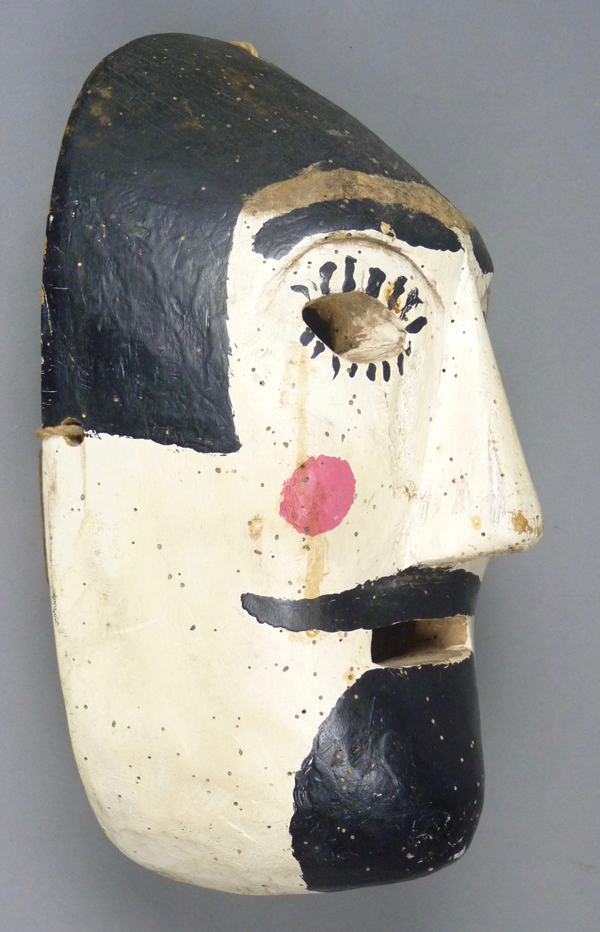
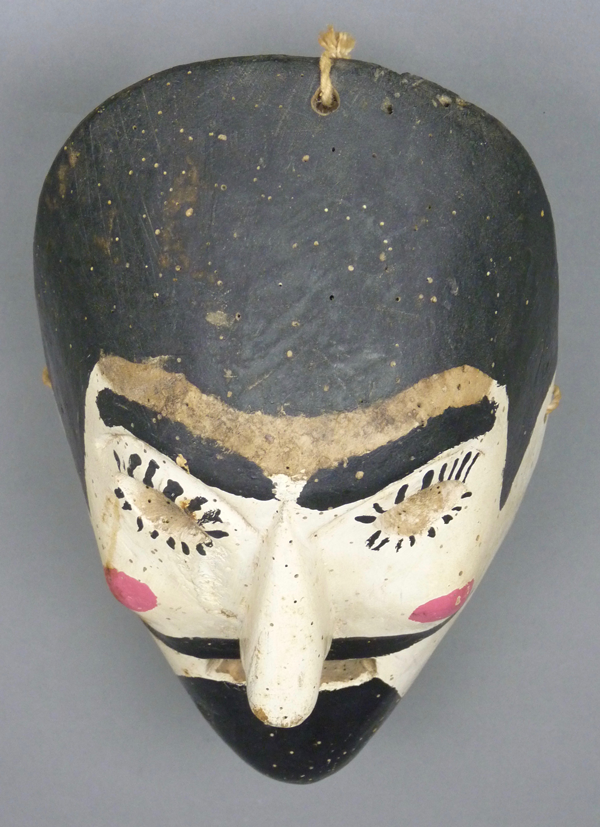
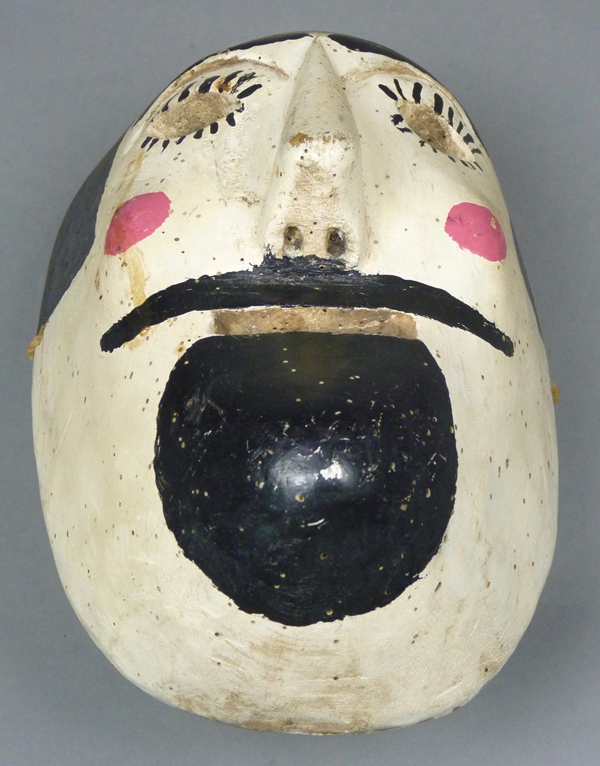
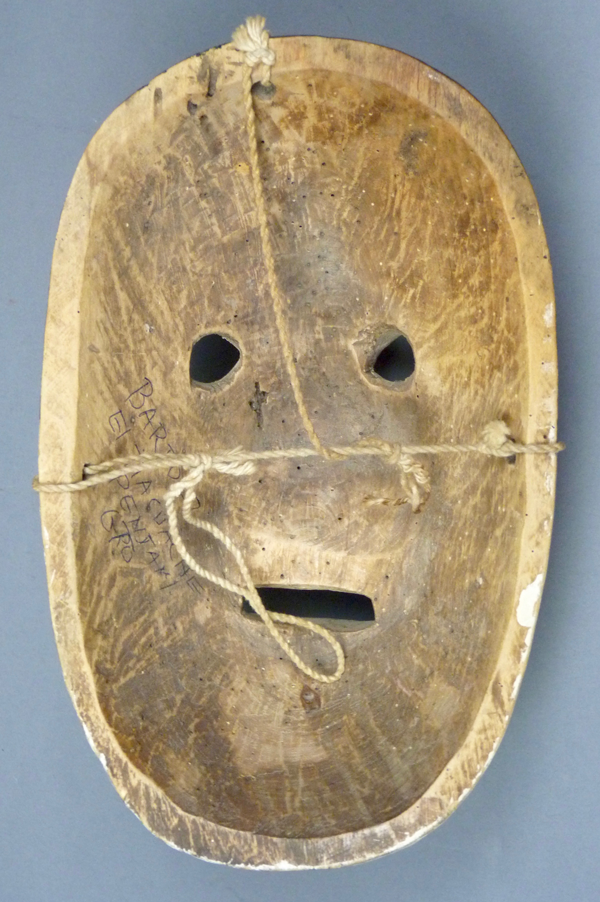
Very informative. I have a mask from the 80’s with a few pinholes and I’m wondering what to do about it